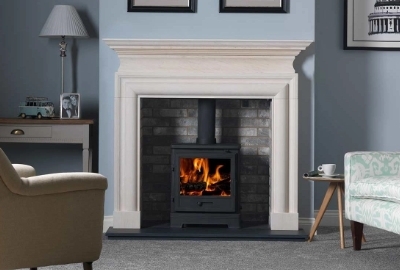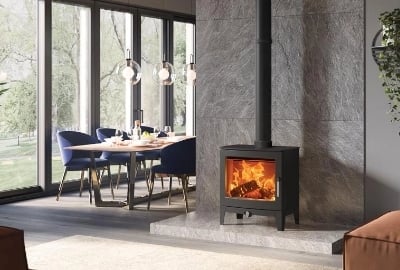

In short, there really is no single right or indeed wrong way to light a wood-burning stove, or in fact any other type of stove or fire, if you have a method that works then by all means stick with it. Remember all stoves and chimney’s have their own “personality” so you may wish to tweak this guide to get the best out of your product.
STEP 1: AIR VENTS AND LOGS
Ensure that all air vents on the stove are open. Put the logs on the base of the stove, it is important that the wood is left and dry. The logs you use may be as thick as a fist or slightly thicker.
STEP 2: KINDLING
Add a layer of small logs about 4cm then two layers or so of kindling (as pictured above). Remember it is important to allow a 1cm gap between the pieces of wood for air to circulate.
STEP 3: FIRE LIGHTERS
Place a few firelighters or pieces of newspaper on top or in-between the kindling. Be aware paper produces unnecessary amounts of ashes and contributes to more soot.
STEP 4: LIGHTING
The final step is easy, and the fun bit, light the fire lighters and close the door. Be aware some chimneys create a better draught than others, if the draught is insufficient it might be a good idea to open the door to your stove slightly until the fuel is properly burning.
CLOSING COMMENTS
As the wood gradually catches fire the amount of smoke gases emitting from the wood will also increase. Many of the stoves we supply are clean burning so the combustion chamber is designed to burn flue gases before they enter the flue pipe, this reduces polluting emissions. When refuelling your stove a good tip is to keep the door ajar for a few seconds before you open it completely. This way the draught in the chimney will ensure the flue gases are removed and you avoid smoke flowing into your room.
















